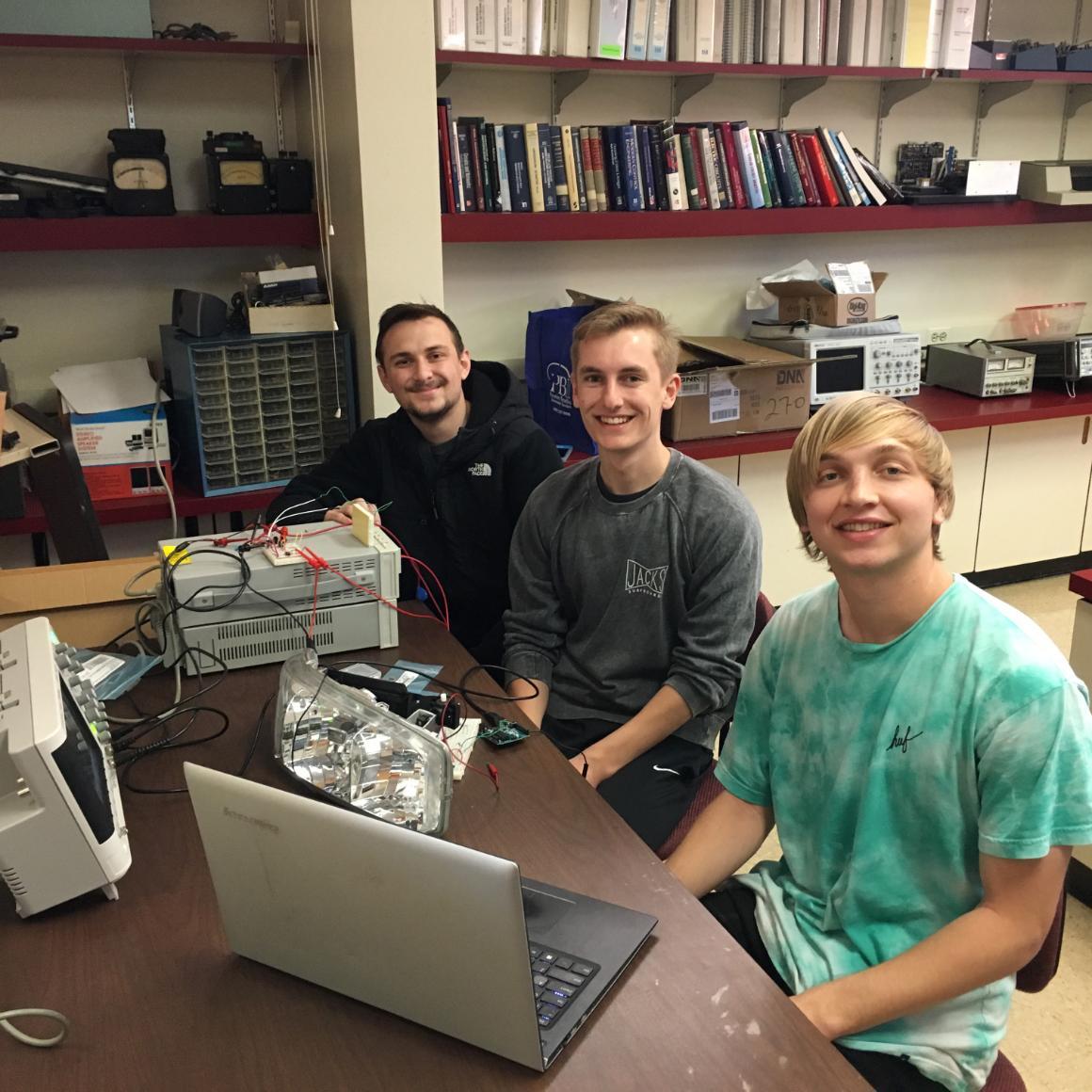
Lighting the Way for Autonomous Vehicles
For decades, autonomous vehicles have been the dream of a society that craves independent, energy-efficient, and safe motoring—a society that might want to use the daily commute to get some work done or stream a video on its computers, tablets, or cell phones, rather than white-knuckling its way through traffic tie-ups.
But the explosion of these wireless devices over the past twenty years, and their ubiquity in our lives, creates a bit of a roadblock for driverless cars, whose wireless sensors vie for space on the radio frequency (RF) spectrum. “There is a limited amount of RF bandwidth available, and it’s running out,” said senior Michael Karachewski. So, he and fellow electrical engineering seniors Andrew Harris and Nick Schnabel are hoping to detour that problem by creating a better-connected environment for smart vehicles using visible light communication (VLC) as their senior design project.
The team is working on a system for communicating data using LED automotive headlights as a proof of concept. “You can communicate data by turning lights on and off really fast—so fast that the human eye can’t notice any flickering. Our system, which uses light to communicate speed, position, and heading, would be used in addition to wireless sensors that use an if/then scenario to communicate with each other,” said Schnabel. “This provides an extra channel of information. Autonomous vehicles need sensing everywhere. We’re investigating whether VLC is viable in addition to other types of connections,” added Karachewski.
The trio started with two quantifiable goals for the project: to increase the distance of transmission from tens of feet to at least 25 and achieve the 20kH data rate required by industry for maintaining a good connection between other cars, traffic lights, or road signs. Harris reports the team has had successes and challenges. “Testing has already exceeded our expectations, and we’ve gotten a very good signal at 30, 40, and even 50 feet, but working with the visible light spectrum is inherently finicky, and things that we expected to work perfectly, based on our modeling, produced different results in real time.”
For this team, that’s the fun of it. “It’s different building something, as opposed to reading about it,” said Schnabel. “When you learn about it in class, you’re dealing with ideal situations. It’s been fun experimenting and running into unexpected outcomes.” Karachewski agrees. “This has been one of my favorite experiences as an engineering student. It’s cool to play around with parts and build stuff, instead of just doing the math. And we’ve had the freedom to take the project where we want it to go.”